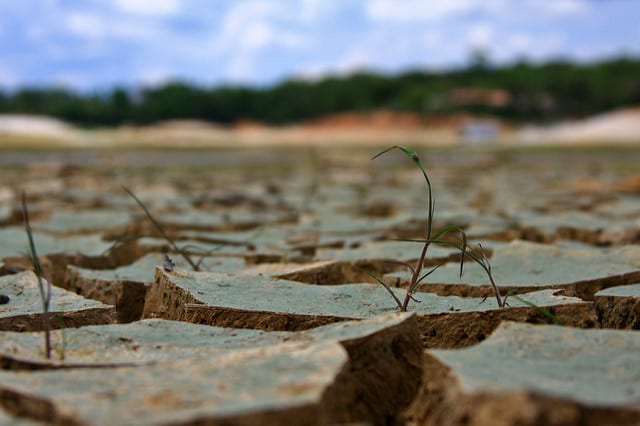 Image courtesy of Hudsӧn on Flickr
Image courtesy of Hudsӧn on Flickr
Desperation and Drought: Why Thousands Flee
In recent weeks the migrant caravan traveling from Central America has made headlines. Thousands from Honduras, Nicaragua, El Salvador and Guatemala are actively fleeing their home countries to seek asylum in America. What caused this mass movement? Many would correctly assume the reason for mobilization is due to gang violence and corruption. But an additional factor, drought, has further destabilized the region. Drought conditions in the region produced dismal crop yields, rendering millions at risk of food insecurity.
The caravan began their journey on October 12th, 2018 in the Honduran city of San Pedro Sula, but their motivation to leave spans decades. The violence which has plagued Central America should not go unmentioned. The region has famously earned the name “Central America’s Violent Northern Triangle.” The region plunged into instability in the 1980’s due to violent civil wars and continues to struggle amid billions of U.S. aid. Today, the region is overwhelmed by drug trafficking, gang violence, and weakened political institutions. San Pedro Sula has long been recognized as the world’s most dangerous city, and Honduras had the highest homicide rate in the world at 91 homicides per 100,000 in 2011. El Salvador earned the same title in 2015 at 103 homicides per 100,000. Before the recent caravan gained media attention, it is important to note thousands have fled the region over the past decades due to the violence. A report published last year found roughly 500,000 people from the Northern Triangle cross the border into Mexico annually.
The rampant violence of the Northern Triangle has ravaged the livelihoods of its citizens for years. Unfortunately, the recent drought has pushed communities to the brink. Central America strongly relies on the success of their agricultural industries.
The International Fund for Agricultural Development reports:
“In Central America, family farming encompasses 2.3 million households and accounts for 70 per cent of food production and 50 per cent of Agricultural Gross Domestic Product.”
Food security and economic success of the agricultural industry in Central America are closely intertwined. Because of drought, the economic and food stability of nearly 3 million people have been compromised. Staple crops lost huge amounts of their usual yield. Broccoli and peas, for example, lost as much as 40% of their typical harvest. In addition to this, Central America has extreme poverty rates. Guatemala has a recorded poverty rate of 76%. Violence compounded by drought conditions ultimately led to the mass movement of thousands. As the caravan moved from Honduras northward it gained strength in numbers from surrounding nations, reaching 7,000 strong. Reports of another caravan from El Salvador came to fruition last week. The Pentagon recently reported roughly 5,000 active duty troops will be stationed at the southern border to stop the caravan from crossing.
Extreme violence, corruption, and weakened political institutions, exacerbated by drought, has taken its toll on the people of Central America. Climate change is a known threat multiplier, meaning it can intensify the existing instability of a country or region, and the situation in Central America is just that. ASP has previously written on how U.S. involvement in Latin American nations via trade agreements could result in fortified relations, government stability, and emigration reduction. Central American nations desperately need government stability, particularly because climate change will continue to inflict its consequences. The U.S., and the international community, should look to Central American as an example of how climate change can plunge nations further into instability.





